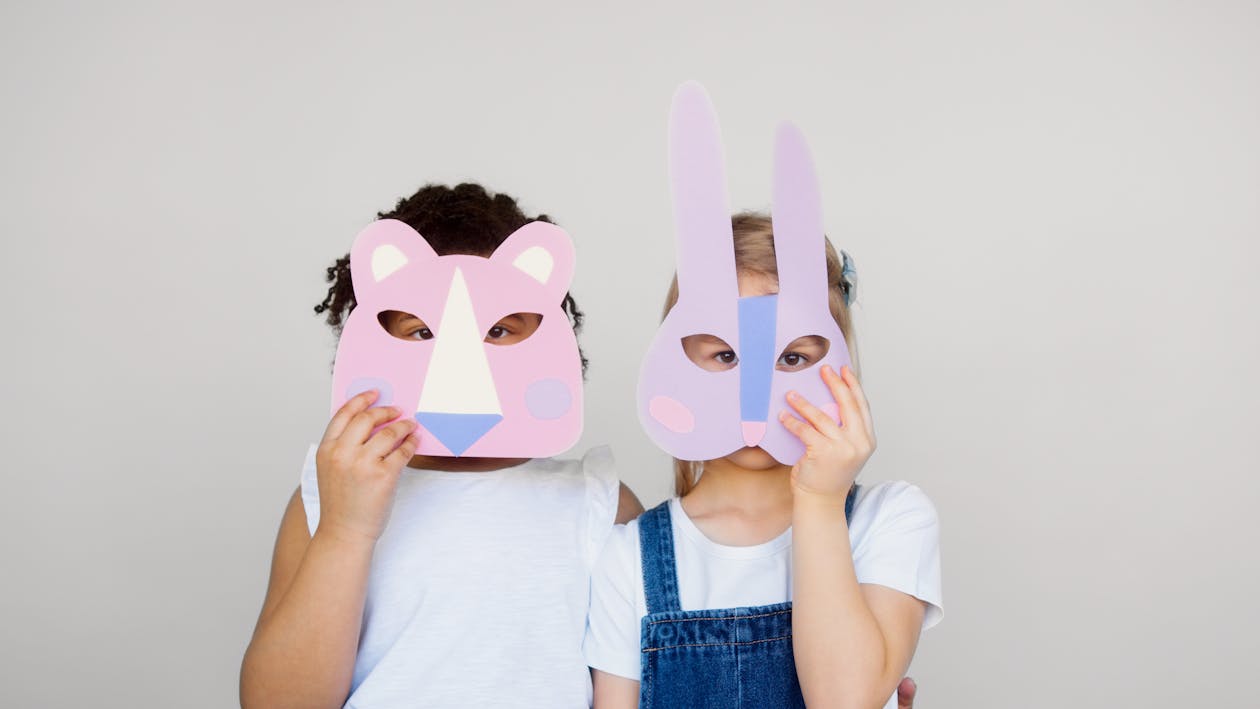Table of Contents
- Understanding Childhood Depression: More Than Just the Blues
- Spotting the Warning Signs: Key Indicators of Depression in Children
- Age Matters: How Depression Manifests Differently
- Is it Depression or Just a Bad Phase? Key Distinctions
- Potential Risk Factors: Understanding the Vulnerabilities
- Your Role as a Parent or Caregiver: What You Can Do
- Seeking Professional Support: Navigating the Next Steps
- Creating a Supportive Environment for Healing
- Conclusion: Hope, Help, and Moving Forward
More Than Just the Blues: Recognizing the Subtle Signs of Depression in Children
Childhood is often pictured as a carefree time, full of laughter, play, and discovery. But for some children, this picture is clouded by shadows of sadness, irritability, and a loss of interest in the things they once loved. We’re talking about childhood depression, a serious but treatable mental health condition that affects more young people than many realize. As parents, caregivers, teachers, and concerned adults, understanding and recognizing the signs of depression in children is the crucial first step towards getting them the help and support they need. It’s not always easy – depression in kids doesn’t always look like adult depression – but learning the signs can make all the difference.
Dismissing persistent changes in mood or behavior as just “a phase” or “typical kid stuff” can be risky. While all children experience ups and downs, childhood depression involves symptoms that are more persistent, severe, and interfere significantly with their daily lives – their schoolwork, friendships, family relationships, and overall enjoyment of life. This article will guide you through understanding what childhood depression is, how its symptoms often manifest differently than in adults, the specific signs to watch for across various aspects of a child’s life, and most importantly, what you can do if you suspect a child you care about is struggling.
Understanding Childhood Depression: More Than Just the Blues
It’s easy to think of depression as an adult problem, but the reality is that children and adolescents can and do experience depressive disorders. It’s more than just feeling sad after a disappointment or grumpy after a bad day. Pediatric depression is a persistent mood disorder that negatively impacts how a child feels, thinks, and behaves.
What Exactly *Is* Depression in Children?
Major Depressive Disorder (MDD) in children is characterized by a period of at least two weeks where a child experiences either a depressed or irritable mood, or a significant loss of interest or pleasure in nearly all activities, along with other specific symptoms. It’s not a sign of weakness or something a child can simply “snap out of.” It’s a complex interplay of biological, psychological, and environmental factors.
Think of it like this: occasional sadness is like a rain shower – it comes, it might be intense for a bit, but then it passes, and the sun comes out again. Depression is more like a persistent, heavy fog that settles over everything, making it hard to see clearly, draining energy, and muting the colours of life. It affects their self-esteem, their energy levels, their concentration, and their outlook on the future.
Why It Looks Different Than Adult Depression
This is a critical point. While adults with depression often present with obvious sadness and lethargy, depressed child signs can be more varied and sometimes misleading. A key difference is the prevalence of irritability. Instead of looking sad, a depressed child might be constantly grumpy, hostile, easily frustrated, or prone to angry outbursts. This can sometimes be misinterpreted as a behavioral problem rather than an underlying mood disorder.
Children, especially younger ones, may also lack the vocabulary or self-awareness to express feelings like hopelessness or worthlessness directly. Instead, their distress might manifest through behavioral changes or physical complaints. They might not say “I feel hopeless,” but they might stop trying at school or refuse to participate in activities they used to enjoy.

Spotting the Warning Signs: Key Indicators of Depression in Children
Recognizing depression requires paying close attention to changes in a child’s typical patterns. Symptoms can vary widely from child to child and depending on age, but here are some common red flags to watch for, categorized for clarity:
Persistent Emotional Changes: The Mood Beneath the Surface
These are shifts in a child’s fundamental emotional state that last for weeks or longer:
- Persistent Sadness or Low Mood: While not always the primary symptom, ongoing sadness, tearfulness, or appearing down most of the time is a significant sign.
- Irritability or Anger: This is very common in child depression symptoms. Increased crankiness, hostility, frustration over minor issues, or frequent anger outbursts that seem out of proportion.
- Hopelessness: Expressing feelings that things will never get better or that nothing matters.
- Feelings of Worthlessness or Guilt: Being overly self-critical, blaming themselves for things that aren’t their fault, or feeling like they are “bad” or “unlovable.”
- Increased Sensitivity to Rejection or Failure: Having an intense emotional reaction to perceived criticism or setbacks.
- Anhedonia (Loss of Interest or Pleasure): Losing interest in hobbies, games, sports, or spending time with friends – activities they previously enjoyed. This is a hallmark sign.
Significant Behavioral Shifts: Actions Speak Louder Than Words
Changes in how a child acts are often the most noticeable signs for parents and teachers:
- Changes in Sleep Patterns: Difficulty falling asleep, staying asleep (insomnia), or, conversely, sleeping much more than usual (hypersomnia), including difficulty waking up for school.
- Changes in Appetite or Weight: Significant decrease or increase in appetite leading to noticeable weight loss or gain (when not dieting or intentionally trying to gain weight).
- Fatigue or Low Energy: Complaining of being tired all the time, lacking energy even for simple tasks, moving or speaking more slowly.
- Social Withdrawal or Isolation: Pulling away from friends and family, wanting to be alone more often, avoiding social events.
- Increased Clinginess or Separation Anxiety (especially in younger children): Suddenly becoming much more dependent on a parent or caregiver.
- Difficulty Concentrating or Making Decisions: Trouble focusing on schoolwork, games, or conversations; seeming indecisive about simple things.
- Restlessness or Agitation: Being unable to sit still, pacing, hand-wringing (more common in some children).
- Frequent Crying Spells: Crying easily or seemingly without a clear reason.
- Acting Out/Behavioral Problems: Increased defiance, oppositional behavior, or getting into trouble at school, sometimes as a manifestation of inner turmoil or irritability.
- School Refusal or Declining Performance: Resisting going to school, a noticeable drop in grades, or lack of effort in schoolwork.
- Talk of Death or Suicide: Any mention of dying, wanting to disappear, giving away possessions, or expressing suicidal thoughts or plans. This should always be taken seriously.
Physical Complaints: When Emotional Pain Manifests Physically
Sometimes, emotional distress shows up in the body, especially if a child struggles to verbalize their feelings:
- Frequent Headaches: Recurring headaches with no clear medical cause.
- Stomachaches or Digestive Issues: Persistent stomach pain, nausea, or changes in bowel habits not explained by a physical illness.
- Other Non-Specific Aches and Pains: Vague complaints of muscle aches or general discomfort.
It’s crucial to rule out underlying medical conditions for these physical symptoms, but if no cause is found, they could be linked to depression or anxiety.
Changes in School Performance and Social Life
Depression significantly impacts a child’s ability to function in key areas of their life:
- Academic Decline: Dropping grades, incomplete assignments, lack of motivation, difficulty concentrating in class.
- Loss of Friendships: Withdrawing from friends, conflicts with peers due to irritability, or lack of energy to maintain social connections.
- Stopping Extracurricular Activities: Quitting teams, clubs, or hobbies they used to be passionate about.

Age Matters: How Depression Manifests Differently
While the core features of depression exist across age groups, the way they are expressed can vary:
Younger Children (Preschool & Early Elementary)
In very young children, signs of depression might look more like:
- Apathy, listlessness
- Excessive crying
- Irritability and tantrums
- Clinginess and fear of separation
- Physical complaints (stomachaches, headaches)
- Failure to make expected weight gains
- Loss of previously acquired developmental skills
School-Aged Children
As children get older, symptoms might include:
- Irritability, anger, hostility
- Poor school performance
- Social withdrawal
- Feeling misunderstood
- Pessimism
- Somatic complaints
- Difficulty concentrating
- Suicidal thoughts (though less specific plans typically than teens)
Teenagers
Teen depression often looks more like adult depression but can still feature significant irritability. Signs include:
- Classic sadness, lethargy
- Persistent irritability and anger
- Withdrawal from family, increased focus on peers (or withdrawal from them too)
- Academic decline
- Increased sensitivity to rejection
- Feelings of worthlessness, hopelessness
- Sleep and appetite changes
- Substance use (as self-medication)
- Higher risk of self-harm and specific suicidal planning
Is it Depression or Just a Bad Phase? Key Distinctions
It’s normal for kids to have bad days or weeks, especially during challenging transitions or after disappointments. So how do you tell the difference between typical moodiness and clinical depression?
- Duration: Depressive symptoms persist for at least two weeks, most of the day, nearly every day. Normal sadness or irritability usually passes more quickly.
- Severity: The symptoms of depression are more intense and cause noticeable distress to the child.
- Impact on Functioning: This is key. Depression significantly interferes with a child’s ability to function at home, at school, and with friends. They aren’t just sad; their sadness or irritability is getting in the way of their life.
- Number of Symptoms: Depression involves a cluster of symptoms occurring together, not just one isolated sign.
If you’re seeing multiple signs from the lists above, they’ve been present for two weeks or more, and they’re impacting the child’s daily life, it’s time to consider the possibility of depression and seek professional advice.
Potential Risk Factors: Understanding the Vulnerabilities
While depression can affect any child, some factors can increase the risk:
- Family History: Having parents or close relatives with depression or other mood disorders.
- Stressful Life Events: Trauma, abuse (physical, emotional, sexual), neglect, loss of a loved one, family conflict, divorce, moving, changing schools.
- Chronic Illness or Disability: Coping with ongoing health problems can be emotionally taxing.
- Bullying: Being a victim of bullying (in person or online) is a significant risk factor.
- Other Mental Health Conditions: Anxiety disorders, ADHD, and learning disabilities often co-occur with depression.
- Temperament: Children who naturally tend towards negativity, worry, or low self-esteem may be more vulnerable.
It’s important to remember that having risk factors doesn’t guarantee a child will become depressed, and many children with depression have no obvious risk factors.
Your Role as a Parent or Caregiver: What You Can Do
If you suspect your child might be depressed, your response is crucial. Here are practical steps you can take:
Observe and Document
Keep track of the specific changes you’re noticing in your child’s mood, behavior, sleep, appetite, and functioning. Note when the changes started and how often they occur. This information will be invaluable when talking to a professional.
Foster Open Communication (Without Pressure)
Create a safe space where your child feels comfortable talking about their feelings. Choose calm moments to check in.
- Start gently: “I’ve noticed you seem kind of down lately, is everything okay?” or “You seem more frustrated than usual, what’s been going on?”
- Listen actively without judgment or interruption. Let them know you hear them.
- Avoid minimizing their feelings (“Oh, don’t be silly” or “It’s not that bad”).
- Don’t force them to talk, but let them know you’re there when they’re ready.
Validate Their Feelings
Let your child know that it’s okay to feel sad, angry, or frustrated. Saying things like, “It sounds like you’re feeling really overwhelmed,” or “I can see why you’d be upset about that,” can help them feel understood and less alone.
Prioritize Healthy Habits
While not a cure, healthy routines support overall well-being:
- Consistent Sleep Schedule: Ensure adequate sleep for their age.
- Balanced Diet: Offer nutritious meals and snacks.
- Regular Physical Activity: Encourage movement, even just short walks.
- Quality Time: Make time for positive, low-pressure connection and activities together.
Know When to Seek Professional Help
Trust your instincts. If your concerns persist, or if the symptoms are severe or impacting your child’s life significantly, it’s time to consult a professional. Don’t wait for it to get worse. Early intervention is key for better outcomes in kids mental health.

Seeking Professional Support: Navigating the Next Steps
Getting help for your child can feel daunting, but there are clear pathways.
Starting with Your Pediatrician
Your child’s pediatrician or family doctor is often a good first point of contact. They can:
- Rule out any underlying medical conditions that might be causing the symptoms.
- Perform an initial screening for depression.
- Provide referrals to mental health specialists.
Finding a Mental Health Professional
You’ll likely be referred to a child and adolescent psychiatrist, psychologist, licensed clinical social worker (LCSW), or licensed professional counselor (LPC) who specializes in working with children. Finding the right fit is important – someone your child feels comfortable with.
Sources for finding professionals include:
- Your pediatrician’s referral
- Your health insurance provider directory
- Local hospital or university psychology/psychiatry departments
- Reputable online therapist directories (e.g., Psychology Today)
- School counselor recommendations
Understanding Treatment Options (Therapy, Medication)
Treatment for childhood depression is often multi-faceted and tailored to the child’s specific needs. The most common approaches include:
- Psychotherapy (Talk Therapy): This is usually the first line of treatment. Effective therapies include:
- Cognitive Behavioral Therapy (CBT): Helps children identify and change negative thought patterns and behaviors.
- Interpersonal Therapy (IPT): Focuses on improving relationship skills and managing conflicts that may contribute to depression.
- Play Therapy (for younger children): Uses play to help children express and work through feelings.
- Family Therapy: Involves the family in supporting the child and improving communication and dynamics.
- Medication: Antidepressant medication may be considered, particularly for moderate to severe depression or if therapy alone isn’t sufficient. This decision is made carefully by a child psychiatrist, weighing potential benefits against risks, and always in conjunction with therapy. Close monitoring is essential.
Creating a Supportive Environment for Healing
Treatment is essential, but a supportive home and school environment play a huge role in a child’s recovery.
- Be Patient and Understanding: Recovery takes time. There will be good days and bad days. Offer consistent love and support.
- Maintain Routines: Predictable schedules for meals, homework, and bedtime can provide stability.
- Encourage, Don’t Push: Gently encourage participation in activities but understand if they don’t have the energy some days. Break tasks into smaller steps.
- Celebrate Small Successes: Acknowledge effort and progress, no matter how small.
- Work with the School: Communicate with teachers and school counselors (with your child’s consent, if appropriate for their age) to ensure they have support and accommodations if needed (e.g., adjustments to workload, access to counseling).
- Take Care of Yourself: Supporting a child with depression can be emotionally draining. Ensure you have your own support system and practice self-care.

Conclusion: Hope, Help, and Moving Forward
Recognizing the signs of depression in children is not about labeling or diagnosing; it’s about awareness and taking concerns seriously. While persistent sadness is a sign, remember that irritability, anger, withdrawal, changes in sleep or appetite, physical complaints, and a loss of interest in fun are also critical red flags, especially in youth mental health.
Childhood depression is real and challenging, but it is absolutely treatable. By paying attention to changes in your child’s mood and behavior, fostering open communication, and seeking professional help when needed, you can make a profound difference. Early intervention significantly improves outcomes, allowing children to overcome depression, build resilience, and rediscover the joy and engagement that every child deserves. Remember, you are not alone in this, and help is available. Reaching out is a sign of strength and the most important step you can take towards your child’s well-being.










